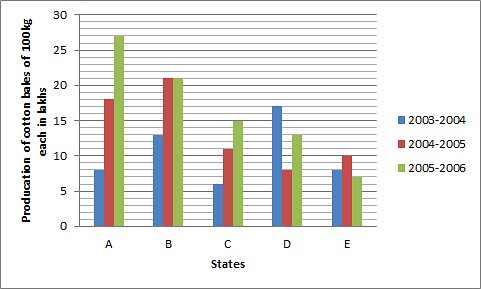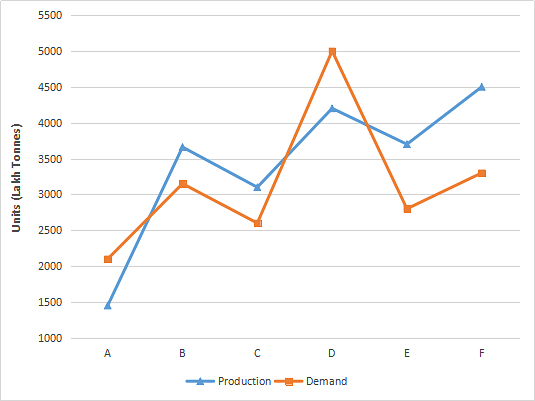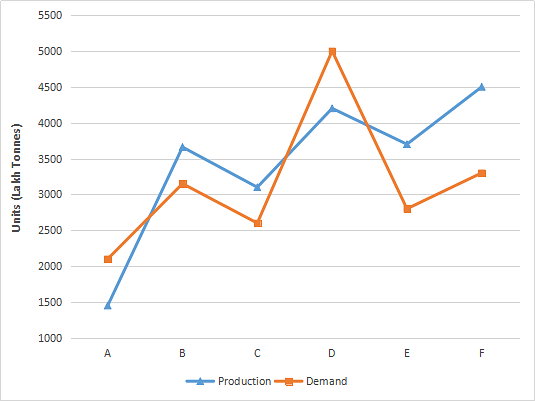Practice Test: Quantitative Aptitude - 15 - SSC CGL MCQ
25 Questions MCQ Test - Practice Test: Quantitative Aptitude - 15
If a * b = ab, then the value of 5 * 3 is
| 1 Crore+ students have signed up on EduRev. Have you? Download the App |
The first and last terms of an arithmetic progression are -23 and 42. What is the sum of the series if it has 14 terms?
The average of five numbers is 56.4. The average of the first and the second number is 53. The average of the fourth and the fifth number is 56. What is the third number?
The cost price of an article is 64% of the marked price. The gain percentage after allowing a discount of 12% on the market price is
The number of seats in an auditorium is increased by 25%. The price of a ticket is also increased by 12%. Then the increase in revenue collection will be
In a factory 60% of the workers are above 30 years and of these 75% are males and the rest are females. If there are 1350 male workers above 30 years, the total number of workers in the factory
In a partnership business, A invests 1/6th of the capital for 1/6 of the total time, B invests 1/4 of the capital for 1/4 of the total time and C, the rest of the capital for the whole time. Out of a profit of 19,400, B's share is:
The average marks obtained by a student in 6 subjects is 88. On subsequent verification it was found that the marks obtained by him in a subject was wrongly copied as 86 instead of 68. The correct average of the marks obtained by him is
A sum of Rs 76 is divided among A, B and C in such a way that A gets 7 more than that what B gets and B gets 6 more than what C gets. The ratio of their shares is
A reduction of 20% in the price of sugar enables me to purchase 5 kg more for Rs. 100. Find the price of sugar per kg before reduction of price.
Directions: The pie chart given below show the spending of a family on various heads during a month. Study the graph and answer the questions.

If the total income of the family is Rs. 25,000, then the amount spent on Rent and Food together is
An article which is marked at Rs. 975 is sold for Rs.897. The discount percent is
Slope of the line AB is -4/3. Co-ordinates of points A and B are (x, -5) and (-5, 3) respectively. What is the value of x?
What is the reflection of the point (-2, 5) in the line x = -1?
What is the slope of the line parallel to the line passing through the points (4, -2) and (-3, 5)?
What is the reflection of the point (-3, 1) in the line x = -2?
Point A divides segment BC in the ratio 4 : 1. Co-ordinates of B are (6 , 1) and C are (7/2, 6). What are the co-ordinates of point A?
Directions: The following graph shows the production of cotton bales of 100 kg each in lakhs by different states A, B, C, D and E over the years. Study the graph and answer the following Questions.

How many kg of cotton was produced by State C during the given period?
Study the following bar diagram carefully and answer the following questions.
The number of the production of electronic items (TVs and LCDs) in a factory during the period from 2009 to 2013.
The total number of products of electronic items is maximum in the year
In the following questions, the graph shows the demand and production of different companies. Study the graph and answer the questions.

The production of company A is approximately what percent of the demand of company C?
In the following questions, the graph shows the demand and production of different companies. Study the graph and answer the questions.

What is the difference between the average demand and the average production of the companies (in lakh tonnes)? [Approximately]
The graph shows the result of 10th class students of a school for 4 years. Study the graph and answer the questions:
The ratio of students who scored second class to the total students appeared in the year 2000 is




























